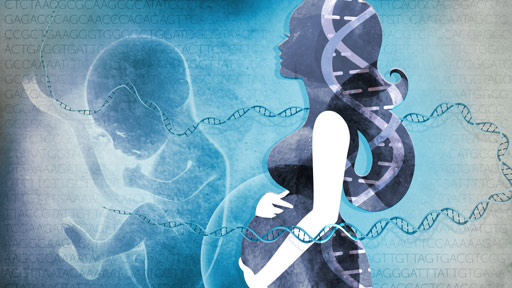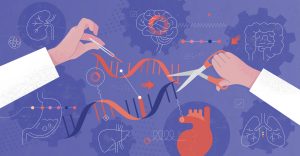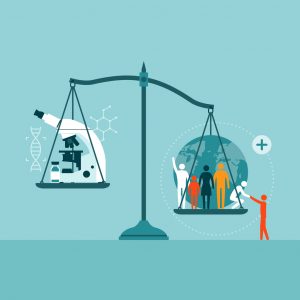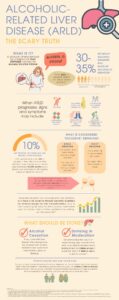In the last decade alone, our understanding of genomics has profoundly advanced with the breakthrough of modern genomic technology. As scientists and clinicians continue researching genetics, the need for “ethical preparedness” increases.1 Meaning, that professionals have the knowledge and skills to recognize when an issue arises. The ever-changing environment has prompted questions that were never considered until only recently. These questions are now heavily debated topics and concerns among bioethicists. One such subject being the ethical implications of human genome editing. While much attention about human genome editing has been placed on the fetus, there lacks focus on the expecting mother of a genetically modified child and their family.2When considering long term effects, it is necessary to research not only the biological impact, but also the social impact genome editing has on a family. This is a powerful tool that can potentially assist in the correction of harmful diseases in a developing fetus. As genomic technology continually transforms our ability to precisely implement genome editing, it is essential to understand how this will ultimately impact routine experimental standards of bioethics with consideration of the fetus, mother, and family. To provide a full picture, we will implement the ethical framework of Lonergan’s “generalized empirical method”, otherwise known as GEM, to access a deeper and more authentic understanding of human genome editing.3 We will further examine how these fundamentals will create “ethical preparedness” in the scientific community.
November 9, 2025
The Ethical Implications of Human Genome Editing

Current Methods of Genome Editing
One laboratory technique that has come to light in recent years is Clustered Regularly Interspaced Short Palindromic Repeats, better known as CRISPR.4CRISPR is an RNA guided defense among bacteria and archaea that was first discovered in the 1980s. Guide RNAs direct Cas endonucleases to a specific DNA strand and create a double stranded break in the DNA. Chromosomal repair responses generate insertions and deletions that trigger the target gene to shut off. This is known as a knockout (KO) mutation. Alternatively, if a donor DNA template is provided, a knockin (KI) mutation can insert or replace genetic material.

We will begin by investigating how specific CRISPR- Cas9 related systems are currently explored as a therapeutic tool in recent research studies. One experiment focuses on the long-term safety, precision, and effects of genome editing for mutations that cause retinal diseases in mice. The target edit genes for this experiment were Hif1α and Vegfα because these genes are known to play a critical role in the development of abnormal blood vessel growth in the eye. The Hif1α gene is an important regulator of cellular responses to low oxygen. Hif1α promotes the expression of Vegfα, which further promotes the growth of normal blood vessels. It is found that in some eye diseases, an accumulation of Vegfα can trigger fragile blood vessels that result in swelling, bleeding, and even vision loss.5 Abnormalities in these critical genes are associated with retinal diseases such as macular degeneration. Researchers began by injecting CRISPR-CjCas9 delivered by adeno associated virus (AAV) vectors into the eyes of mice.6Fourteen months later, they reviewed the retina’s physical structure and found that steady gene editing was still occurring with no damage to the retina or vision. Mice that were treated with AAV-CjCas9: Hif1α displayed normal retinal thickness and preserved photoreceptor layers. There was also no presence of histologic anomalies, apoptotic activity, or retinal dysfunction. However, the mice treated with AAV-CjCas9: Vegfα resulted in retinal thinning, which was the same for mice with a vegfα deletion. Indel frequencies remained stable for both Hif1α and Vegfα within this fourteen month period, suggesting persistent on- target editing. Notably, no detectable off target mutations were spotted at potential cleavage sites, emphasizing high specificity of CjCas9. According to Jo, et al. (2019), “In the treatment of retinal diseases… AAV is a widely utilized platform for therapeutic gene delivery and has demonstrated long-term efficacy and safety”.7 The body weight and systemic health of injected mice remained unchanged. This indicates that intravitreal AAV delivery confines CjCas9 expression to ocular tissues only. These results offer support to the effectiveness and long-term safety of “in vivo gene editing for therapeutic treatments of various retinal diseases”.8 This study ultimately demonstrates the growing ability to perform lasting genetic editing on organisms. It also raises crucial questions about how similar edits could be made to developing human embryos, where there is higher risk for unintended and heritable changes that could carry lifelong consequences.
Similarly, AAV has also been utilized as a therapeutic strategy for hemophilia. Hemophilia is a genetic disorder that is characterized by a coagulation deficient factor that causes random bleeding, typically common with trauma or surgery. The purpose of this study was to test the efficiency of a dual delivery system of AAV donors and lipid nanoparticles (LNP)-CRISPR to target and edit genes in the liver cells of mice.9 These cells are responsible for producing coagulation-related proteins. The aim was to reset normal blood clotting by simultaneously inhibiting antithrombin, a natural anticoagulant, and introduce a functional human factor IX (HFIX) gene into the genome. Researchers chose a non-homologous end joining (NHEJ)- mediated KI approach because this method does not depend on cell division, making it more effective in the liver. The AAV donor was used as a long-term DNA template for gene integration. LNP-CRISPR created double strand breaks at the gene encoding locus of AT, the Serpinc1 locus. This dual system enhanced KI efficiently while minimizing toxicity when compared to other AAV methods. It was also found that targeting the Serpinc1 was useful for regenerating coagulation. This approach resulted in stable liver enzyme levels and offered benefits over other hemophilia therapies by addressing acute and chronic bleeding tendencies while maintaining safety and long-lasting effects.10
While mice serve as good models in genetic research because of their similarity to humans, pigs are also considered an important model for human biomedical studies due to their commonality with humans involving physiology, organ and body size. The first genetic modification in pigs was performed in 1985 with DNA microinjection into fertilized oocytes, leading to the creation of transgenic animals. While many other gene editing tools have become available in recent years, direct genetic modification into the zygotes of pigs is still the primary method for creating gene-edited lines. This is because pigs do not have stable embryonic stem cells that are capable of long term germline production.Normally, researchers would directly introduce CRISPR-Cas9 into fertilized eggs to induce precise gene knockouts or insertions. Recently it was discovered that porcine expanded pluripotent stem cells (pEPSC) have the potential to differentiate into the three distinct germ layers. In combination with CRISPR, pESPC allows for heritable gene editing before embryo implantation. Pig models have been created using this method to mimic human diseases such as cardiovascular disorders. Additionally, pig models have also advanced xenotransplantation by removing immune reactant genes from pig embryos, resulting in pig organs better compatible for human transplantation. The growing shortage of organs has prompted alternative treatments. According to Leonova, et al. (2022), “Pigs are now considered the optimal organ donor for xenotransplantation,” providing hope for the advancements of human regenerative medicine.11 However, it is vital to consider that altering embryos presents ethical concerns regarding moral limits and the boundaries of human life intervention. The balance between medical breakthroughs and respect for life creation is a topic of concern. The Ethical Dilemma Behind Genome Editing A possible solution to finding this balance comes from Lonergan’s ethical framework of GEM. GEM consists of four main sections; Experience, Understanding, Judgement, and Decision.12 Lonergan argued that genuine moral understanding comes when there is observation and internal awareness, combining empirical data from the senses with thoughts drawn from one’s own consciousness. “Being Attentive” in the context of genome editing demands attention not only to laboratory mechanisms, but also to the lived realities of mothers and embryos directly impacted by germline editing. “Being Intelligent” involves seeking to understand the data of research studies to discover underlying patterns. GEM urges scientists to ask deeper questions about purpose and consequence. “Being Reasonable” promotes judgement when assessing risks associated. Lastly, “Being Responsible” converts moral insight into ethical action. What distinguishes Lonergan’s GEM from other moral frameworks is its ability to self correct, a trait that is essential to scientific discoveries. This directly corresponds with the values embedded in the Catholic Intellectual Tradition (CIT).13 This tradition is deeply rooted in faith and reason. When examined through the lens of Lonergan’s GEM, CIT becomes a functional framework for engaging both the empirical and moral aspects of human life. CIT allows for faith and reason not to be opposing forces but, rather, parallel paths for understanding our moral responsibilities. Applying this to genome editing invites scholars to integrate insights from biology, theology, and human experience. Scientific knowledge alone cannot answer questions of human purpose. This requires compassion and moral reflection.
As CRISPR gene editing continues to evolve from animal models to human application, the ethical challenges of germline modification become increasingly complex. This is because it exposes unborn children, mothers, and their family to unknown consequences that could last a lifetime. Although CRISPR presents an opportunity to delete or repair disease-causing DNA, there are serious concerns about off-target mutations and the unpredicted effects.14 These uncertainties are at the root of ethical concerns, especially when considering that the edited embryo will develop into a fully autonomous human. Moreover, sometimes these mutations can be passed on to future generations. The need for strict ethical oversight is fundamental for women who participate in germline editing studies in order to have full transparency before human embryo editing takes place. Institutional Review Boards (IRBs) are one of the main ways to protect subjects in a study. Their knowledge and understanding of human gene editing can map ethical and scientific procedures that researchers can follow. This can ensure that proper safety protocols are being followed, thus prioritizing the mother and child’s wellbeing.
However, it is not always this simple. Another major concern about performing this type of research has to do with whether true informed consent can exist in first generation germline trials. Women are often faced with emotional and moral pressure to be “a good mother”. Sometimes, these pressures can blur the line of voluntarily participating versus being forced to join a study so as to not be perceived negatively by the outside world. This can also cause mothers to not fully understand that experimental trials are not treatment but rather a high risk procedure that comes with uncertainties. Therefore, ethical safeguards should ensure that consent forms clearly explain the experiment and all risks, known and unknown.15 Germline editing interventions also reshape families, emotional relationships, and future generations. If the procedure results in unintended consequences, the emotional burden of guilt and blame may weigh heavily on the parents, especially the mother.16 This is why ethical responsibility in genome editing must move beyond biological impacts and include social wellbeing. Ultimately, as genome editing continues to move closer to human application, it is crucial that ethics continues to evolve alongside technologies. The health of the embryo, the mother, and the stability of families must remain priorities for all decision making. By utilizing Lonergan’s Generalized Empirical Method within the Catholic Intellectual Tradition (CIT), scientists are equipped with empirical and moral knowledge. This approach reminds us that true progress must promote human dignity and serve the common good, not only the pursuit of scientific success. By grounding modern biotechnology in the principles of faith, reason, and moral responsibility, we ensure that the power to reshape life remains guided by compassion, justice, and respect to all. Watts, Gabriel, Ainsley J Newson, and Lisa Dive. “Ethical Preparedness in the Clinical Genomics Laboratory: The Value of Embedded Ethics Expertise.” Journal of Medical Ethics 50, no. 8 (2024): 530–31. https://doi.org/10.1136/jme-2024-110014. ↵
M. Farrell, Ruth, Janet Malek, and Christopher Thomas Scott. “Beyond Babies: Implications of Human Genome Editing for Women, Children, and Families.” Accountability in Research 29, no. 2 (2022): 67–76. https://doi.org/10.1080/08989621.2021.1899824. ↵
Koike, Akito, and Paul J. Brindley. “CRISPR/Cas Genome Editing, Functional Genomics, and Diagnostics for Parasitic Helminths.” International Journal for Parasitology, May 2025, S002075192500092X. https://doi.org/10.1016/j.ijpara.2025.05.001. ↵
Jo, Dong Hyun, Taeyoung Koo, Chang Sik Cho, Jin Hyoung Kim, Jin-Soo Kim, and Jeong Hun Kim. “Long-Term Effects of In Vivo Genome Editing in the Mouse Retina Using Campylobacter Jejuni Cas9 Expressed via Adeno-Associated Virus.” Molecular Therapy 27, no. 1 (2019): 130–36. https://doi.org/10.1016/j.ymthe.2018.10.009. ↵
Jo, Dong Hyun, Taeyoung Koo, Chang Sik Cho, Jin Hyoung Kim, Jin-Soo Kim, and Jeong Hun Kim. “Long-Term Effects of In Vivo Genome Editing in the Mouse Retina Using Campylobacter Jejuni Cas9 Expressed via Adeno-Associated Virus.” Molecular Therapy 27, no. 1 (2019): 130–36. https://doi.org/10.1016/j.ymthe.2018.10.009. ↵
Lee, Jeong Hyeon, Jeong Pil Han, Dong Woo Song, et al. “In Vivo Genome Editing for Hemophilia B Therapy by the Combination of Rebalancing and Therapeutic Gene Knockin Using a Viral and Non-Viral Vector.” Molecular Therapy – Nucleic Acids 32 (June 2023): 161–72. https://doi.org/10.1016/j.omtn.2023.03.008. ↵
Leonova, Elena I., Vasily V. Reshetnikov, and Julia V. Sopova. “CRISPR/Cas-Edited Pigs for Personalized Medicine: More than Preclinical Test-System.” Research Results in Pharmacology 8, no. 3 (2022): 87–98. https://doi.org/10.3897/rrpharmacology.8.83872. ↵
Jones, Martin K. “The Four Transcendental Imperatives of Bernard Lonergan.” Equivalent Exchange, December 9, 2015. https://equivalentexchange.blog/2015/12/09/the-four-transcendental-imperatives-of-bernard-lonergan/. ↵
M. Farrell, Ruth, Janet Malek, and Christopher Thomas Scott. “Beyond Babies: Implications of Human Genome Editing for Women, Children, and Families.” Accountability in Research 29, no. 2 (2022): 67–76. https://doi.org/10.1080/08989621.2021.1899824. ↵


Tags from the story
Gianna Montelongo
Author Portfolio PageRecent Comments

